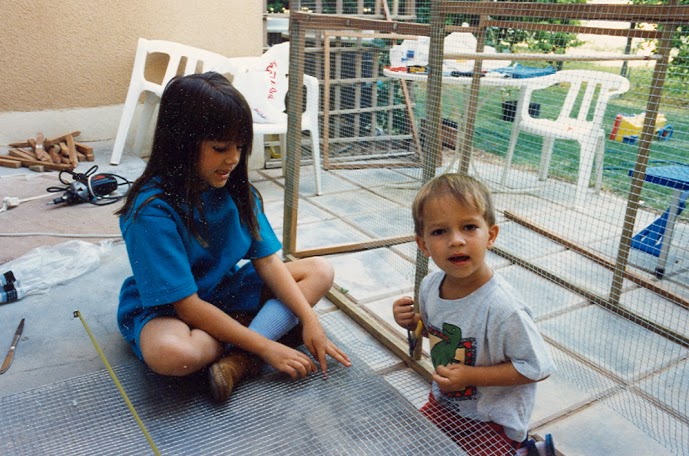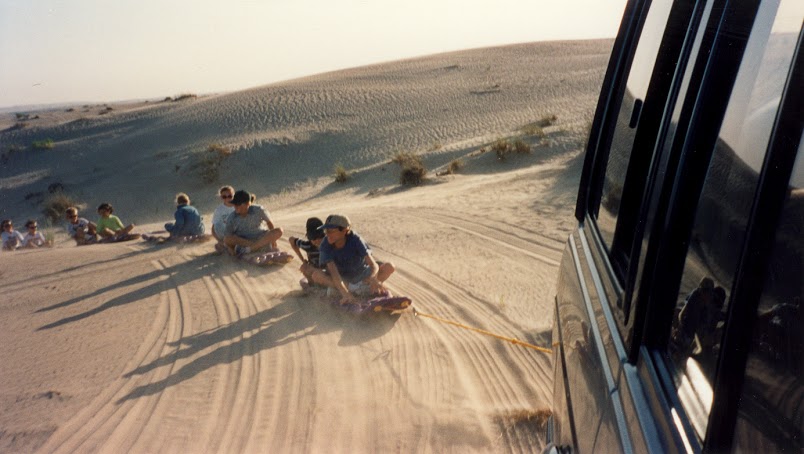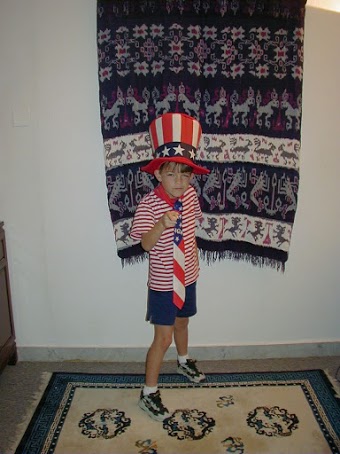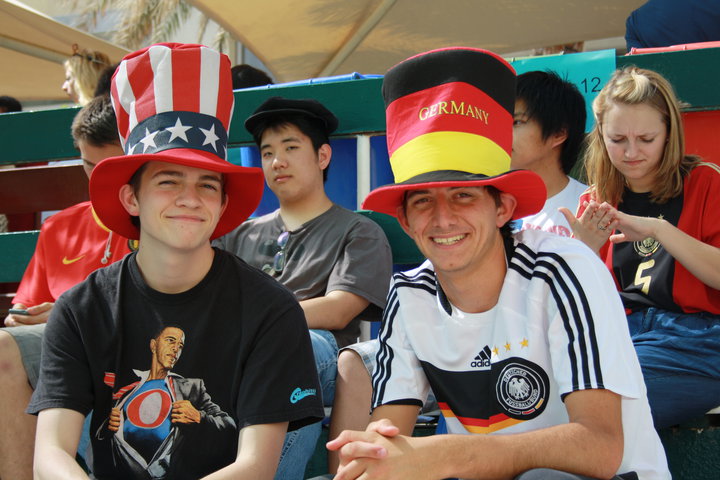
Oh, hello there, maker and maker education community. I’m Andy, the new VISTA Leader for Maker Ed. That means I have the honor of supporting and building the capacity of our VISTAs for the next year. This blog is my attempt to introduce myself, which I should immediately admit is somewhat futile as I’ve been blessed and cursed with a complex life story. So instead of explaining the dynamics of American expatriate life and trying to sum up a life of influences that may have led me to Maker Ed I would like to offer a triptych of experiences in making: one from my childhood, one from adolescence, and one from my young adulthood. I hope you will find it comprehensive to your curiosity and pleasing to your taste.
Part I: Costume Design and the Fall Festival
We didn’t have any Halloween traditional celebrations during my fifteen years in Abu Dhabi—it was too satanic and peculiarly Western for the cultural authorities—but we still found a way to celebrate in spirit through the annual Fall Festival. Every year at the American Community School, the Elementary students would parade the field in costumes and roam to various stations, dunking teachers with well-placed football kicks and collecting a great deal of sugary delights. I took the costume seriously as for Willises of any extended family clan—West Coast, East Coast, or Arabian—creativity is held at a premium. One year, we seized on a major debate at school over a change in our mascot from Falcon, which was also the mascot of every other school in the Gulf, to Sand Viper, which though sinister was at least original. Fortunately, this meant a discarded mascot costume and a prime opportunity so the Willis family seized the costume from a storage closet and sewed a knife in its back. Was it incredibly unpleasant in 100-degree heat to walk for a couple hours in an adult size falcon costume? Indeed. Was it also an awesome experience in resourceful making? Of course it was.
Part II: The Zen Making of Civilization
Gaming is a hallmark of Willis family reunions. Talking to us about games could feel a bit like talking to Bubba about shrimp. We play board games, card games, computer games, laser tag games, lawn games, whiffle ball games, word games etc. etc. (PS: I hope you imagined that in Bubba’s voice). But one game series franchise reigns supreme in its longevity and its hold over the Willis imagination: Sid Meir’s Civilization series. This series puts the player in charge of a small band of settlers from the foundation of their first enclave to an ever-expanding continental empire. Players manage everything from resources to religion to culture to war in the process of world domination. The Willis family was hooked from the first iteration of the series and onwards to the fourth—we are aware a fifth exist, but would rather not discuss its heresies. While games between Willis family members are cold-blooded and competitive, I always enjoyed the building aspect of the game, helping my peaceful denizens increase their happiness, find spirituality, and build grand Wonders. Yet there’s an essential impermanence to creating in games like Civ. Like Zen monks raking their finely crafted mandala sands back into nothingness, there was a Zen quality to ending a game with my family wiping away an advanced civilization and beginning once more with a lone settler in an undiscovered wilderness and wondering what might be.
Part III: Creating a Space for Conversation at the Marian Miner Cook Athenaeum
There are few better jobs in the world than to be one of the two annual Fellows of the Marian Miner Cook Athenaeum at Claremont McKenna College. The job entails facilitating a Monday through Thursday dinner-lecture series for every week of two semesters. Ath fellows work to bring speakers to campus, create dialogue at the head table with the speaker during dinner, and then introduce the speaker prior to their speech. Being an Ath fellow enabled you to talk about everything with everyone while imbibing free wine and inhaling a three-course meal. I will never forget conversations with Nate Silver about poker or Zadie Smith about death or Nobel Peace Prize winner Shirin Ebadi’s philosophy that life was too short not to start a meal with dessert. Yet the part I enjoyed most was creating that little introductory speech at the beginning to frame the conversation (example here). The speech provided context for the speaker’s work and why that work was significant to our college in that particular moment. It was an example of another form of making that is ephemeral and difficult to grasp in the moment yet truly consequential. As an Ath Fellow, I reveled in the intangible impact of words and their potential to shape and mold our interpretation of the world. If I have anything close to “philosophy of making,” it agrees with the sentiment expressed so beautifully by JK Rowling that, “words are, in my not-so-humble opinion, our most inexhaustible source of magic.”
In Sum
These three experiences are meant to suggest rather than comprehensively document my journey to Maker Ed and hopefully they provide a few glimmers into my background. However, I now admit, like a parent confessing the real purpose of “Fun Time with Carrots,” an ulterior motivation. In telling you about my experiences with making, I have attempted to allude to the significance of making in my life and its significance in general. Often, “proof of concept” seems a foreboding shadow over the maker movement—Where are the test scores? The data? The quantifiable variables? Well, Jim, I’m a volunter/writer, not a data scientist. All I can say for certain is that making, whether physical or intangible, gave me a sense of confidence, led me to critical reflection, and helped me create meaningful experiences for my college community. My hope is that while these stories and others on this blog are anecdotal and singular; collectively, like individual mosaic stones, they may begin to form a larger picture of how and why making matters.
Other Stories in Making via Photo




